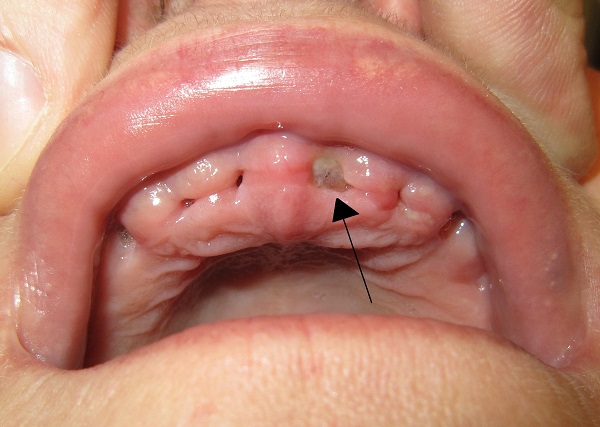When you have surgery, you can expect some lingering discomfort in the healing and recovery process. This is the same with extractions of teeth. In some cases, healing doesn’t happen as it should and the pain becomes exacerbated. One such phenomenon is called dry socket. In this article, we explore the nature and causes of it, dry socket symptoms, and how to treat or reduce your chances of having it.
What Causes Dry Socket?
When a tooth is extracted, you are left with an opening where the tooth once was mounted. In the socket, a blood clot should form in order to promote healing from the oral surgery. The dry socket symptoms develop when that clot doesn’t form or, having developed, later disintegrates or becomes dislodged.
The dental and medical community has not settled upon a definite cause for dry socket. However, the suspects include infection in the socket caused by bacteria and trauma in the area of the socket. Below, we explore more fully the risk factors.

What Increases the Risk of Dry Socket?
We’ve alluded to trauma in the surgery. This happens when the extraction proves difficult. Wisdom tooth removal falls in this category. Here are some other behaviors or conditions that raise the prospect of dry socket:
- Tobacco use. Add dry socket to the many ills fostered by smoking and chewing tobacco. These activities either slow healing or prevent it all together. Also, you puffing on the cigarette could separate the blood clot from the socket.
- Oral contraceptives. Birth control pills contain significant estrogen levels. This hormone can interfere with the healing process.
- Poor dental habits. Failing to brush your teeth, floss, and visit your dentist regularly increases the risk of infections that can promote dry socket. Likely, these poor habits may even have caused oral diseases that require the tooth extraction in the first place.
- Prior history. Having a prior episode of dry socket may suggest your body has difficulty healing wounds through blood clots.
How to Know If You Have Dry Socket
Dry socket symptoms are often similar across many oral diseases. Here, you can normally narrow the possibilities to dry socket because these will follow shortly after your tooth extraction.
- Pain. The severe pain that is often a calling card for dry socket normally has on set between one and five days after the surgery. You may experience pain, not just where your tooth was pulled, but in your ear, eye, the temple of your head, or neck. Dry socket pain can radiate to these areas on the side where your tooth was pulled.
- Bad taste or breath. A foul taste or smell from your mouth may also indicate dry socket. This can result from the pus or the filming bacterium that becomes plaque.
- Fever. If you feel warm, take your temperature, as you might be experiencing a slight fever.
- Visible bone. If you see the bone in the socket, this is a strong signal that a clot has not developed.

How Do You Treat Dry Socket?
Treating dry socket often involves relieving the pain and defeating the infection.
If dry socket develops, go to your dentist promptly. He or she will flush food or other materials to clean the socket and fill it with a dressing or plate for protection against future bacterial exposure. You may have multiple visits post-surgery to have the dressing changed.
The dentist may prescribe antibiotics for the infection and pain relievers to mitigate the pain. You can also try ibuprofen or aspirin if your dentist deems it safe or proper. Also, consider these home remedies to find comfort:
- Clove oil. With its antibacterial, infection cleaning, and anti-inflammatory properties, eugenol makes clove oil an effective pain treatment. Professional-grade or prescription concoctions may use clove oil. If you apply it directly, don’t use it for more than 20 minutes at a time.
- Temperature based treatment. As a remedy against dry socket, place cold packs against your face, 15 minutes at a time, for the first 24 hours following the surgery. From then on, a warm washcloth can help with pain.
- Honey. On a sterile gauze, honey can reduce inflammation and pain. Use as needed for pain and inflammation relief, but change every few hours if you’re going to use it for a long time.
- Black tea bags. Boil a black tea bag in one cup of water. After approximately five minutes, take it out for cooling and squeeze any excess water away. If you want to apply it cold, place it in the freezer. The black tea can be effective because of the tannic acid. This is one of nature’s antibacterial devices.
How to Reduce the Chance of Dry Socket Before Surgery
Heed the instructions of your dentist carefully and faithfully. Improper care of the extraction area following the surgery may very well contribute to dry socket. Your dentist may give you some of these tips:
- Avoid drinking with a straw.
- Minimize as much as possible rinsing and spitting.
- Your diet should include soft foods such as yogurt and applesauce, especially in the first days after surgery. Gradually, you should be able to tolerate somewhat harder foods, but you should still stay away from popcorn, hard candy, or tougher meats for a while to reduce the risk of dislodging the clock.
- Caffeinated, sugary, carbonated, and hot beverages such as coffee and hot chocolate may interfere with the fighting off bacteria and the healing process overall.
- Before your surgery, cease any tobacco use and reduce or avoid sugary foods.
- Brush your teeth adequately and floss to remove that which may promote bacteria and infection.
Conclusion
A dry socket can be a very painful experience, though it generally doesn’t last for more than ten days if you treat it correctly and promptly. While you shouldn’t expect more serious conditions as a result of dry socket, do promptly contact your dentist if you sense the onset of dry socket symptoms. Share with us your experiences with dry socket symptoms and treatment.

Leave a Comment